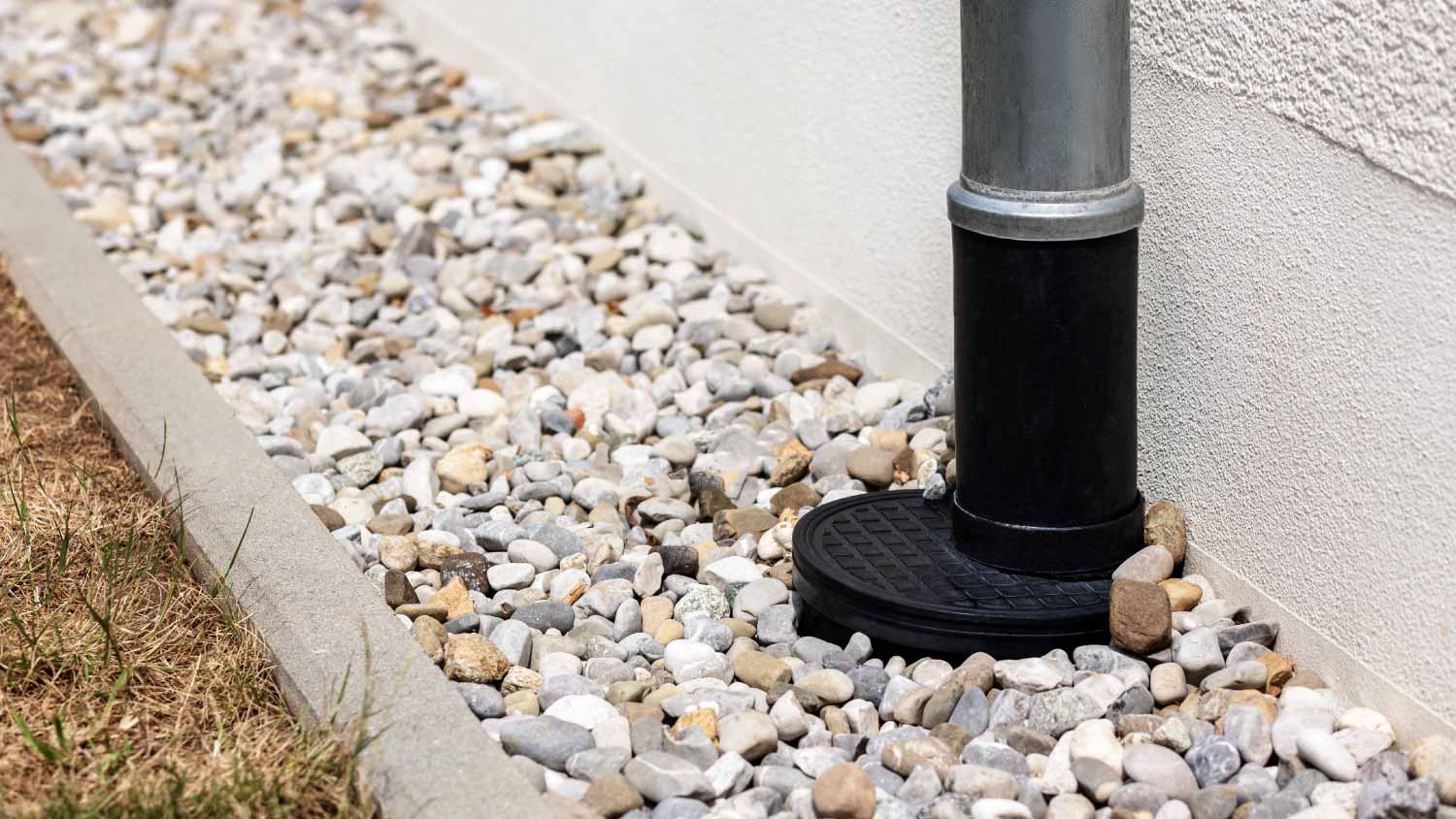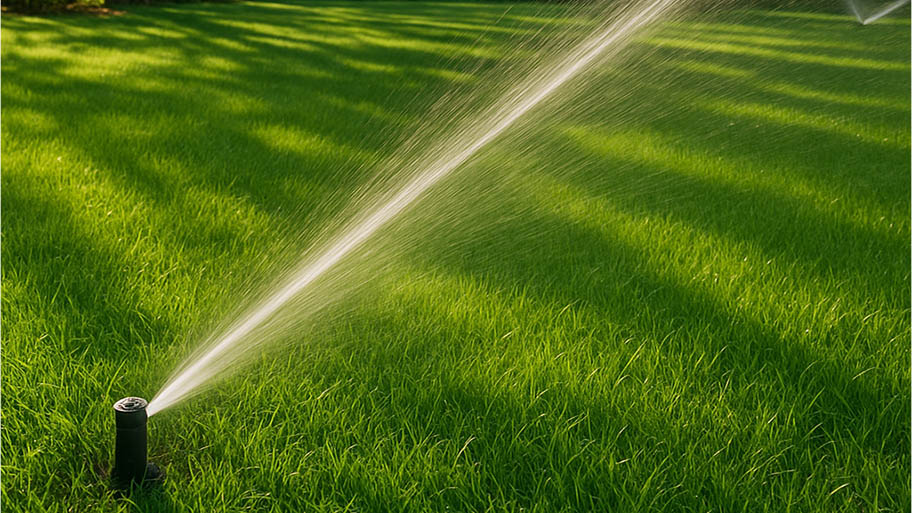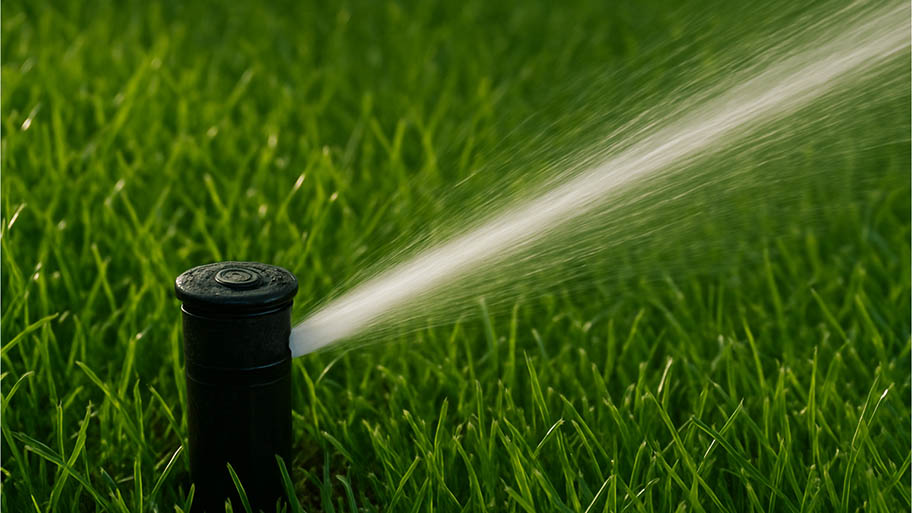
Discover the average outdoor misting system cost, key price factors, and ways to save. Get transparent, expert-backed estimates for your installation.
Dig deeper into French drains


French drains can be buried 8 to 24 inches deep in the ground.
It’s vital that the drain is buried with a slope.
The cost to install a French drain can range between $500 and $18,000.
If you have standing water in your lawn every time it rains, your yard has poor drainage. Installing a French drain can be the answer to your problem, but you want to ensure you install it deep enough to work correctly. So, how deep is a French drain buried, and how does it work?
Pooling water in your yard and around your home can cause a slew of problems. A waterlogged area can damage your lawn, cause issues with your foundation, kill trees, and be a haven for pests. Let’s dig into the details of French drains and whether you should DIY or hire a French drain professional.
A french drain provides a sunken channel for water to disperse into the soil surrounding your home. Installing this type of system requires digging a trench and hooking up pipe connections, among other tasks, so it's best to hire a professional french drain installation company for this project.
A French drain, also known as weeping tile, rubble drain, and rock drain, is a drainage trench filled with rock or gravel. Typically French drains include a perforated pipe, which is placed in the trench on top of fabric lining and covered with rocks.
French drains redirect water to another area to prevent flooding and water damage to structures and lawns. They can be placed around your home or in your yard where excess water consistently pools.
So, how deep in the ground do you need to install a French drain? Well, it depends on a few factors, such as the slope of your lawn, soil type, average rainfall, and the specific needs of the drain system. Typically, French drains are 18 to 24 inches deep, but they can be as shallow as 8 inches deep. However, they can be deeper if you live in an area with heavy rainfall and high water tables. You should consult your local French drain installer to determine the appropriate depth for your yard to ensure long-lasting results.
A french drain also needs to have a slope to ensure it drains properly. The exact angle depends on the type of pipe but at least a 1% slope is recommended, which is about 1/8 inch per foot.
Curious about how a French drain works to clear water away from your home’s foundation? Check out these steps to its success.
Water seeps into the gravel rocks and collects into the perforated pipe, which disburses it away from the area.
The rocks stabilize the drain and allow the water to flow freely.
The French drain also filters out debris and sediment from the water, which prevents the system from clogging.
The pipe is also sloped downwards to allow proper drainage. It allows gravity to assist in directing the water away from the area where the drain is installed.
In some cases, French drains can be made without pipe. However, rock French drains are used for shallow water issues. So, for traditional French drains, they have some common characteristics, such as:
Perforated pipe: Due to its durability, most French drains have a plastic pipe. The two most common types used are PVC or corrugated pipe.
Rocks or gravel: The drain is filled with gravel or rock to stabilize the pipe, which helps prevent clogging and filter the water.
Filter fabric: Not all French drains contain filter fabric, but it helps prevent debris and dirt from clogging the drain. Non-woven drainage fabric is recommended due to its durability and structure, which allows water to flow efficiently.
Sloped design: French drains must have a slight angle to ensure proper drainage. The slope allows the water to flow more easily and disperse to another area.

The cost of a French drain can range from $500 to $18,000, with a national average of $9,250. The total cost varies significantly and depends on whether you install it yourself or hire a French drain professional to do the job. You can expect to pay between $10 to $100 per linear foot for French drain installation.
The type of French drain, location, and complexity of the job will also factor in the cost. For example, yard trench drains that divert surface water cost between $30 and $90 per linear foot. Exterior French drains run between $10 and $50 per linear foot on average.
Plus, there are other drainage installation costs to consider, such as whether your state requires building permits for drainage systems. The standard fee, depending on where you reside, runs between $50 and $200.
Installing a simple French drain for shallow water issues is easier to tackle on your own than a full-blown installation, but it still requires serious tools, knowledge, and sweat labor. You’ll need to dig a trench to the correct depth, plus outfit the drainage system correctly, which is very difficult without proper training. There are many aspects to consider when installing a French drain, and if it is improperly installed, it can cause flooding and damage to your home and yard.
Instead, hire a French drain installation company near you to do the job. These drainage pros have the expertise to ensure the drain is installed correctly and will work efficiently for years to come. Plus, they can customize your installation based on the specifics and characteristics of your yard.
From average costs to expert advice, get all the answers you need to get your job done.

Discover the average outdoor misting system cost, key price factors, and ways to save. Get transparent, expert-backed estimates for your installation.

Discover yard drainage cost estimates, including average prices, key cost factors, and tips to help you budget for your yard drainage project.

If your sprinkler system isn’t working, it may be time for a new pump. Find out sprinkler pump replacement costs with this guide.

If your sprinkler valve is stuck open, it can lead to flooding, damaging your grass and plants. Our guide uncovers the issue and offers solutions.

Learning how to convert your sprinkler to drip irrigation saves you money on water use and reduces weed growth. Follow this guide to learn how to do it.

Sprinkler heads can go missing in your lawn or landscaping, leaving you with uneven watering. Learn how to find sprinkler heads covered by grass and plants.